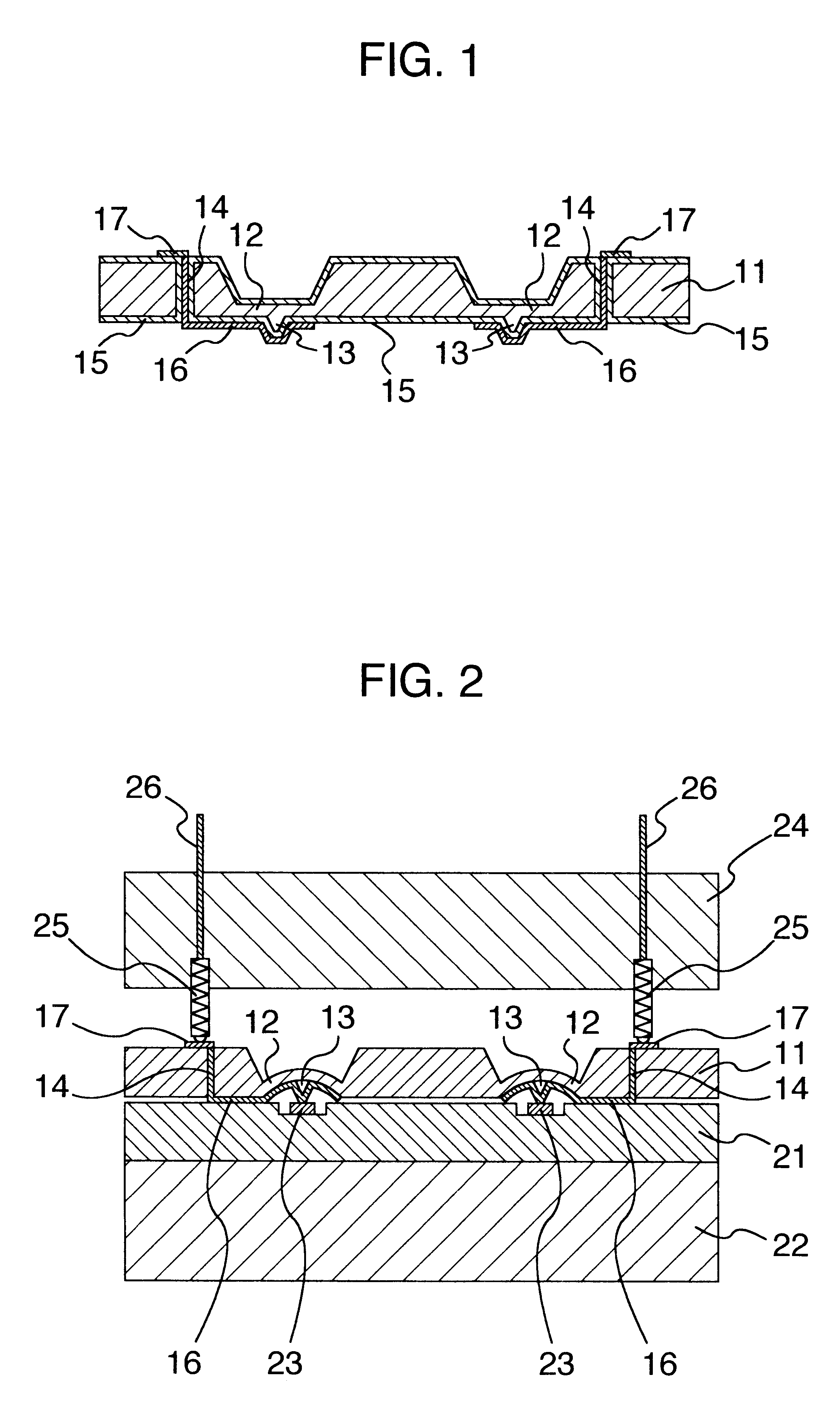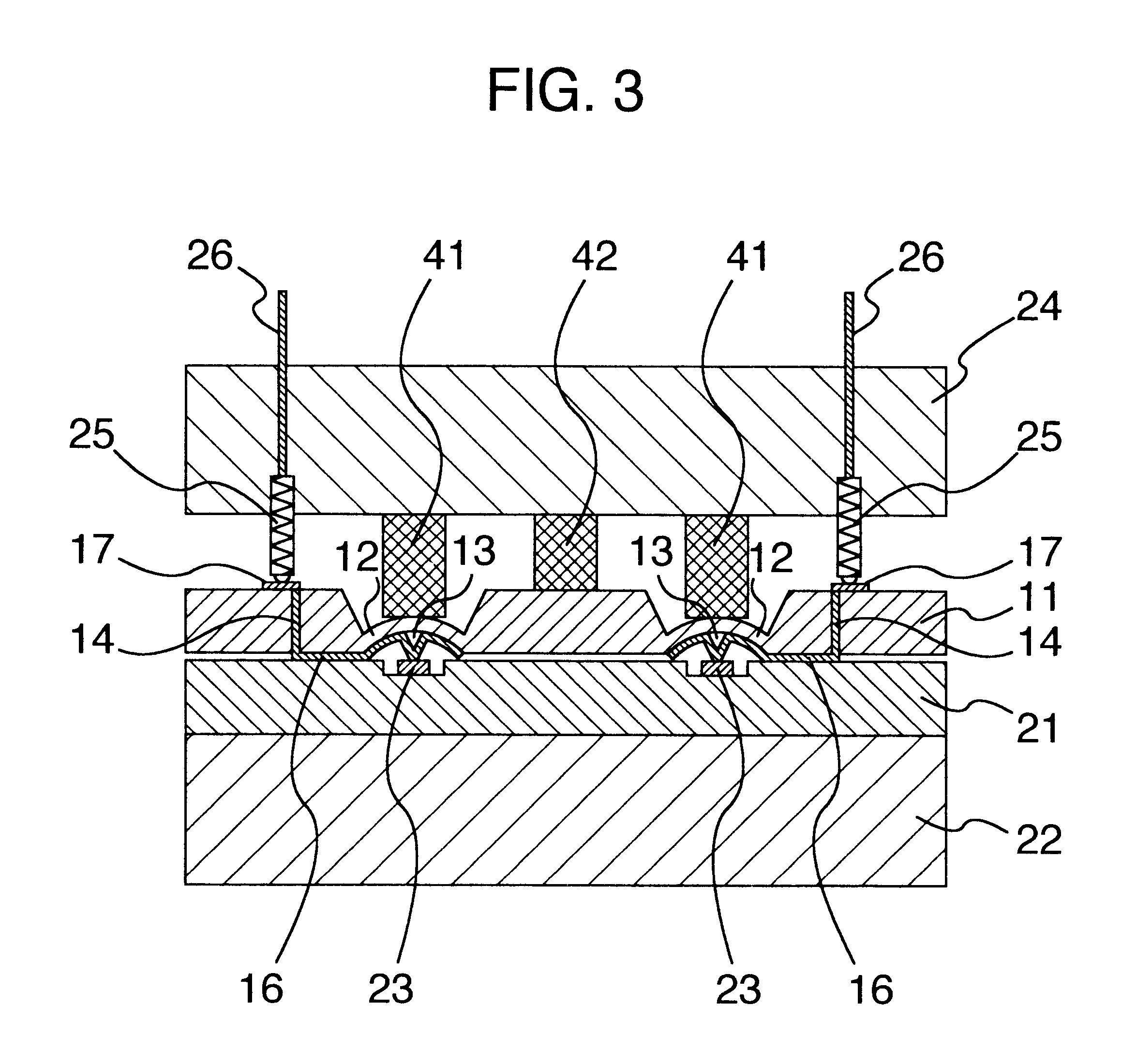Manufacture method for semiconductor inspection apparatus
a manufacturing method and semiconductor technology, applied in semiconductor/solid-state device testing/measurement, semiconductor/solid-state device details, instruments, etc., can solve the problems of difficult mass production of inexpensive probe structures, difficult to dispose of a number of probes on a substrate, and long time-consuming to align and fix each probe with high precision
- Summary
- Abstract
- Description
- Claims
- Application Information
AI Technical Summary
Problems solved by technology
Method used
Image
Examples
Embodiment Construction
Embodiments of the invention will be described with reference to the accompanying drawings. FIG. 1 is a cross sectional view of the structure of an inspection wafer of a semiconductor inspecting apparatus according to an embodiment of the invention.
An inspection wafer 11 has a both-end supported beam or diaphragm (hereinafter, the term diaphragm is used) 12, probes 13, and through holes 14. The probe 13 is formed on the diaphragm 12 and projects downward from the bottom surface of the inspection wafer 11. The through hole 14 is formed as many as the number of probes 13. The whole surface of the inspection wafer 11 is covered with a silicon oxide film 15. The probe 13 and wiring lead 16 are formed on the silicon oxide film 15. The wiring lead 16 extends from the probe 13 via the through hole 14 to a secondary electrode pad 17 formed on the opposite surface of the inspection wafer 11.
FIG. 2 is a cross sectional view showing the structure of a semiconductor inspection apparatus accordi...
PUM
 Login to View More
Login to View More Abstract
Description
Claims
Application Information
 Login to View More
Login to View More - R&D
- Intellectual Property
- Life Sciences
- Materials
- Tech Scout
- Unparalleled Data Quality
- Higher Quality Content
- 60% Fewer Hallucinations
Browse by: Latest US Patents, China's latest patents, Technical Efficacy Thesaurus, Application Domain, Technology Topic, Popular Technical Reports.
© 2025 PatSnap. All rights reserved.Legal|Privacy policy|Modern Slavery Act Transparency Statement|Sitemap|About US| Contact US: help@patsnap.com



